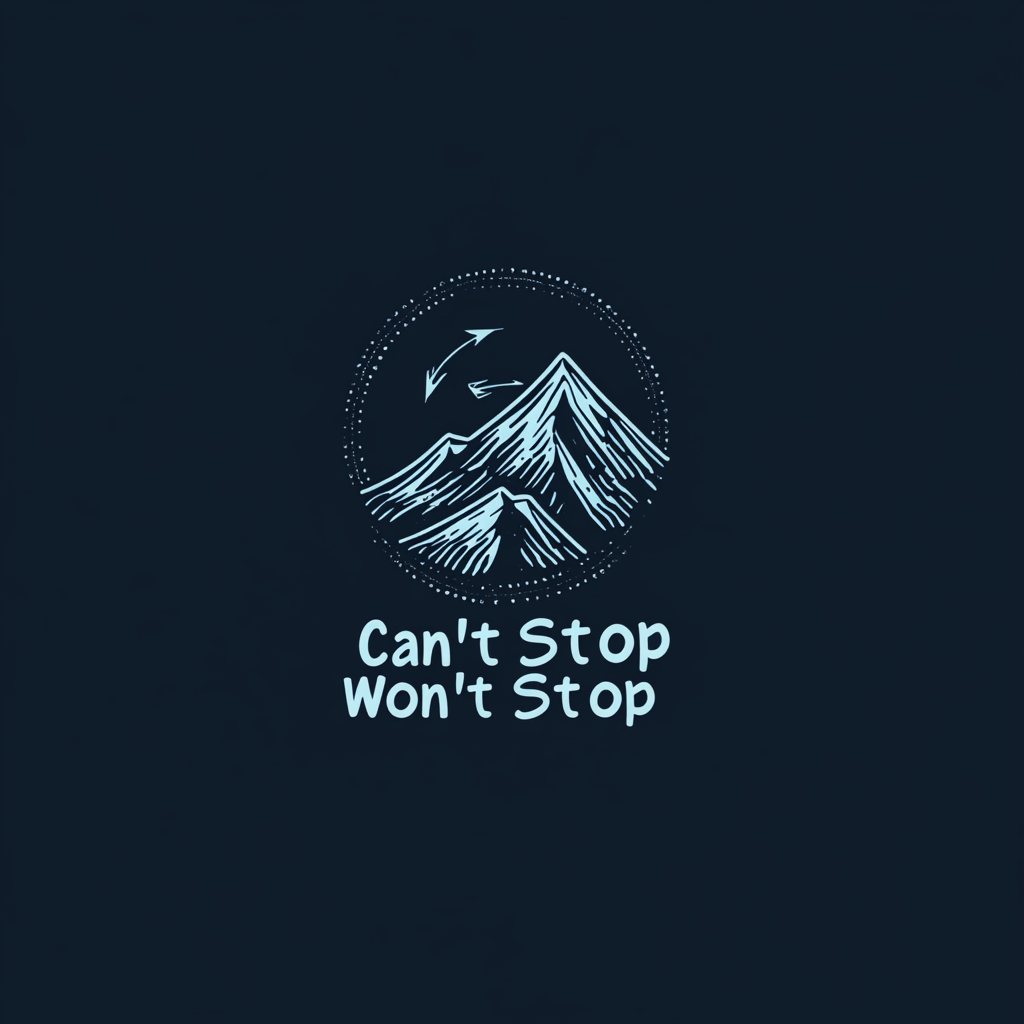UTMB 2025: Into the Well
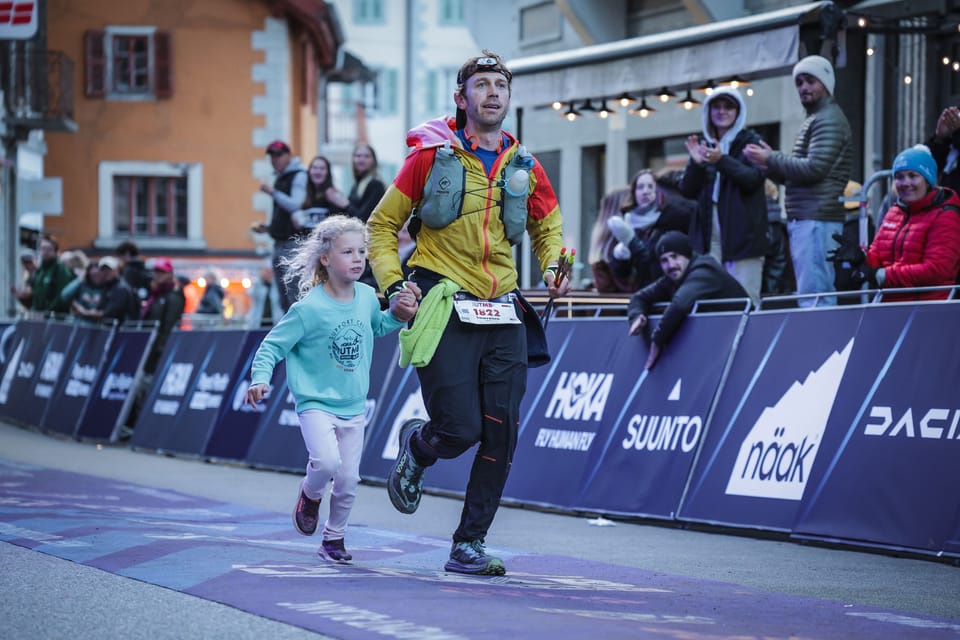
I went to Chamonix to answer a simple question: what is my limit? In my head, that limit looked a lot like Courtney Dauwalter’s pain cave—a place you enter on purpose, and survive. What I learned was my limit was so much further than I could imagine.
The Prep
This race started months earlier in quiet kitchens and dark streets. I set alarms for 4–5 a.m. (sometimes 2 a.m.), ran before the kids woke up, stopped drinking, stayed on macros, and dropped ~9 kg in three months—after reading the research on how body mass impacts climbing speed and ultramarathon outcomes, then doing the work. That was the build.

Chamonix
I reached the start less than thirty minutes before the gun, mixed with spectators, and shuffled out near the back. The first hours became a parade of bottlenecks while headlamps disappeared up the trail. In a wet year like this the penalty is real; call it ~one hour of start tax before the real climbing even began.
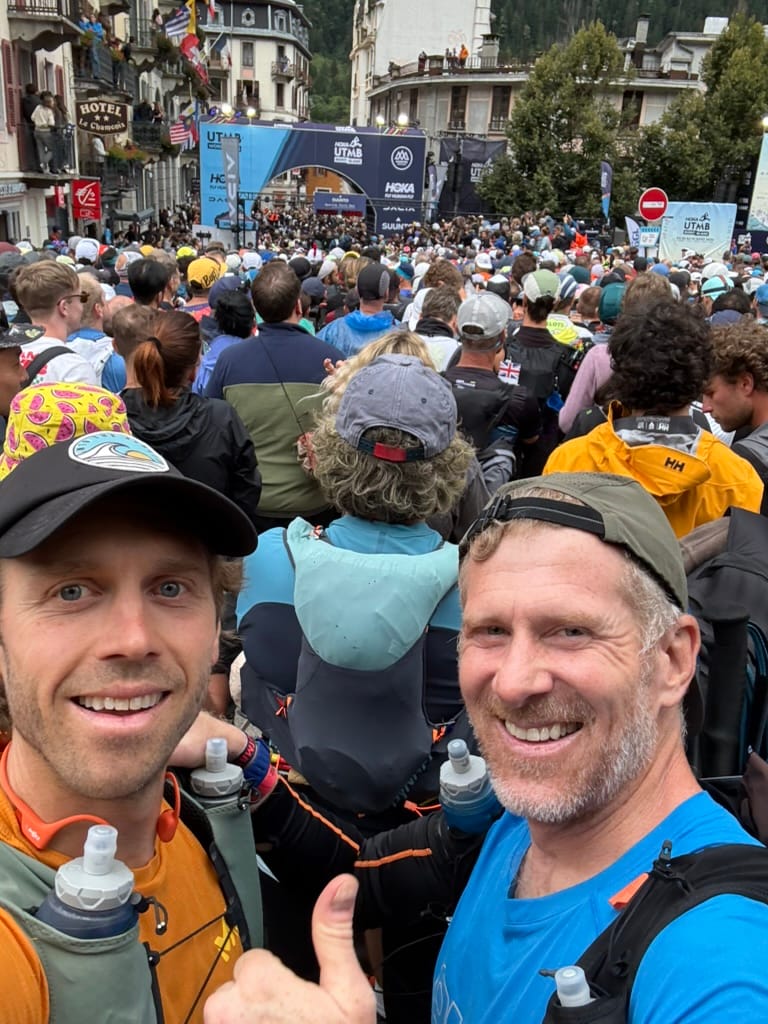
Night one: dark, pouring rain, thick, slippery mud
From Chamonix to Combal it was black, pounding rain and gluey mud that made running downhill treacherous. Every pitch was a slide. The job was simple but felt impossible: get down without getting hurt. Pass where you could, sit behind traffic where you had to, protect the ankles for the day to come.
Mandatory stop before Bonhomme → Layer late, pay twice
At the tent before Bonhomme I pulled on rain pants, waterproof gloves, and a zip fleece, but my hands were already numb and it took forever. I left the tent shivering hard enough to consider dropping; fifteen controlled minutes of running finally flipped shakes into sweat. Lesson one: if you layer late, you can’t layer. Lesson two came later: a shell that goes over the pack so I can pull it up while moving and skip the hypothermia tax entirely. That’s standard for 2026.
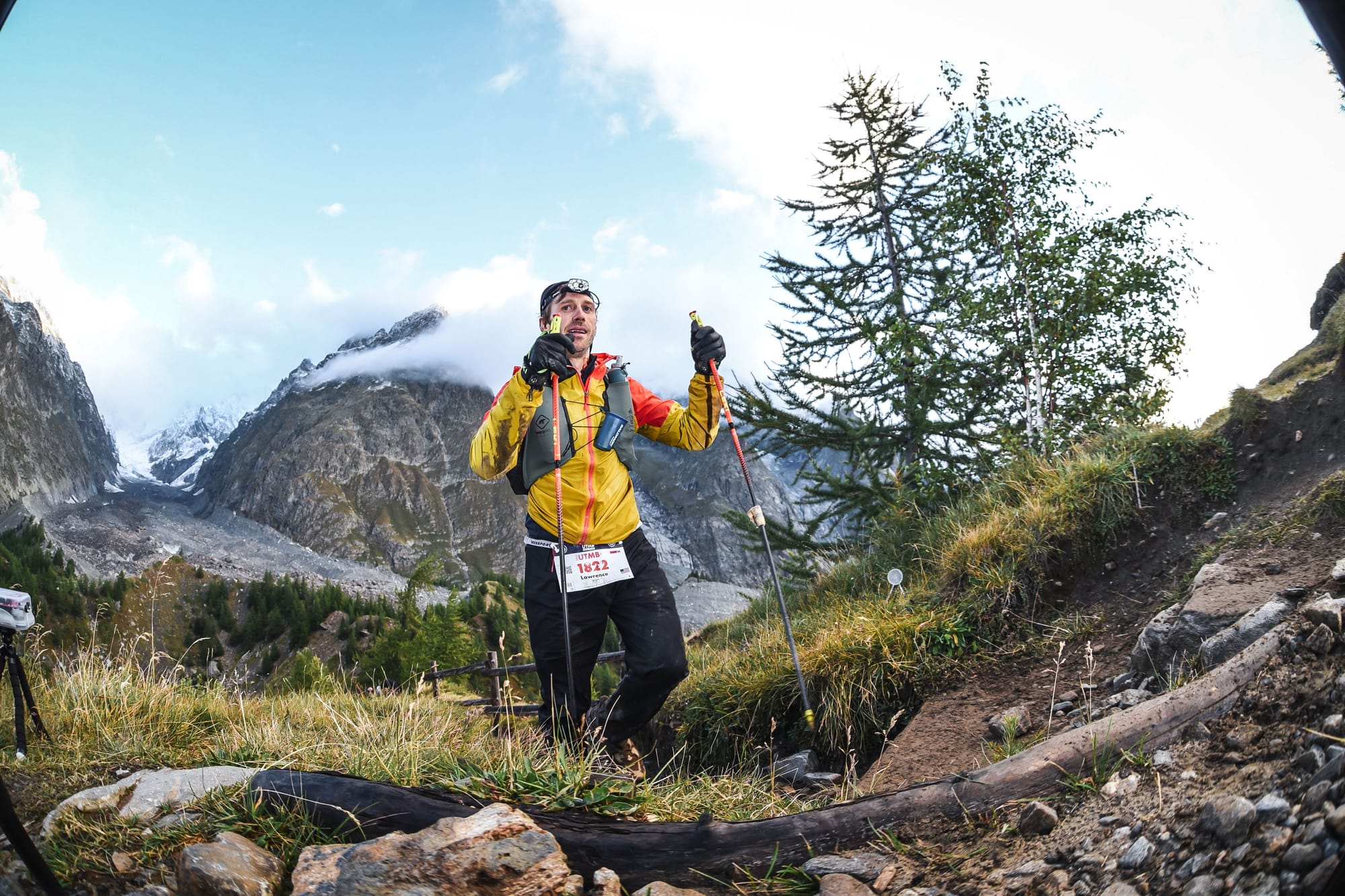
Descent to Les Chapieux → Fall and a snapped pole
Around km ~45, before Les Chapieux, I slipped, put all my weight onto a pole, snapped it, then rolled in the mud. Unhurt, I kept moving. The medical tent taped it well enough for another ten kilometers; then it failed again. For 2026 I’ll stash a light pole-repair sleeve + tape and have a spare set with crew.
Combal → the footing flips
Just past Combal, the character changed. The Italian side was smooth and runnable—firm track if you had momentum—and I pointed toward Courmayeur.
Checrouit → Courmayeur → The reset
Warm food, dry base and socks, and fresh bottles. JJ handed me pretzels and PB&Js—I ate one pretzel and two sandwiches there, packed one more pretzel and four PB&Js, and finished every bite by the end. I’d carried gels to halfway and restocked from there. One note for 2026: I often carried 0.5–1.0 L too much water I couldn’t reach; I’ll wear a belt for the third and fourth flasks so extra water is grabbable, not dead weight.
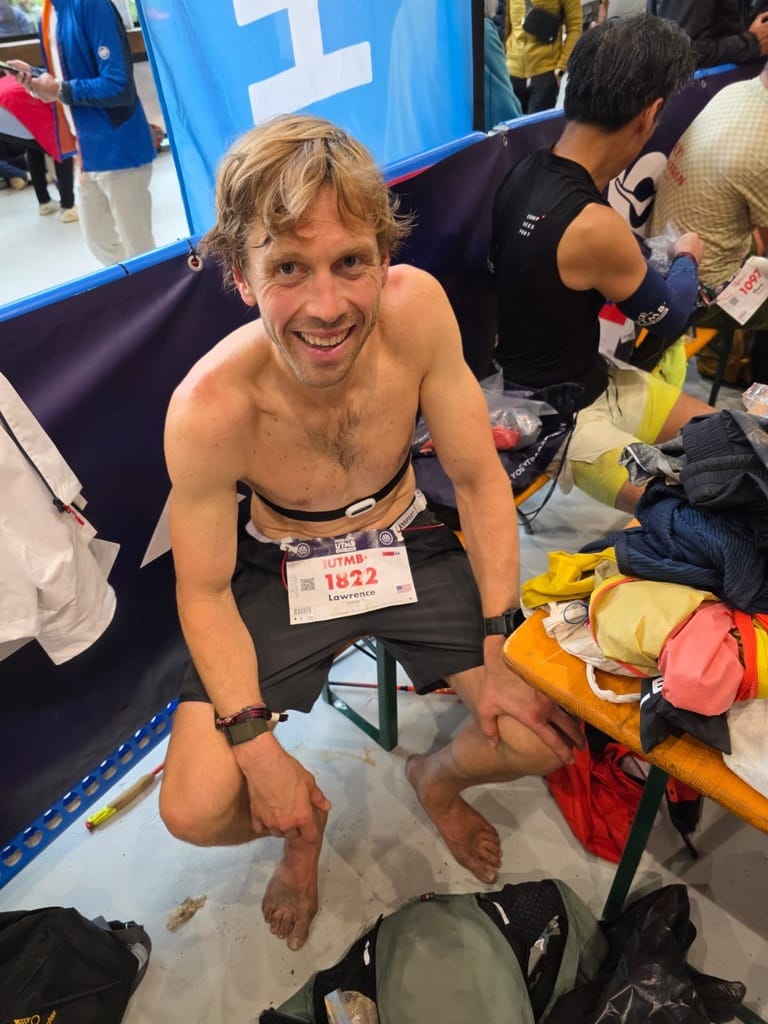
Courmayeur → Bertone/Bonatti → Arnouvaz → Warm day, lungs not playing
After Courmayeur the weather warmed up, but the airway was already turning. At Arnouvaz the throat was scratchy; that was the first real sign. I stayed on the 40-minute fueling rhythm and started 100 mg caffeine Enervit every two hours—clear head, no jitters.
La Fouly → the bonk I earned
On the leg to La Fouly I saw a hand-written “6 km → La Fouly” and delayed a gel for “real food at the aid station.” The climb stretched forever. I rolled in bonked and cramping, and paid with ~20 minutes of regrouping—six Cokes, four broths, and back to steady. Sodium was under-used all day; I didn’t make PF500 tabs easy enough to grab and defaulted to broth instead.
After Champex-Lac the trails got really hard
The smooth Italian feel was gone for good. Champex-Lac into Trient and beyond turned into the real work: rock and roots with long, mean profiles—runnable only if you had power, and by then bronchitis/EIB had settled in.
The wall forms → true panic
The Champex climb turned that scratchy throat into straw breathing. From there to almost La Flégère I lived inside bona-fide airway constriction and had real panic, not just “mini panics”—moments where I couldn’t breathe and the chest wouldn’t open. I kept moving, kept eating, and waited for the body to right itself.
Output fell even as effort felt maximal
- 0–82 km (to Courmayeur): average HR ~127 bpm, controlled and runnable
- 82–175 km (after Courmayeur): average HR ~118 bpm, airway-capped while pace slid—especially on the rocky/rooty downhills that demanded power I didn’t have
That nine-beat drop wasn’t my legs quitting; it was the airway setting the ceiling. Next year I’ll carry a WADA-legal albuterol MDI with a mini-spacer and follow one simple rule on the big cols: layer five to ten minutes before the crest.
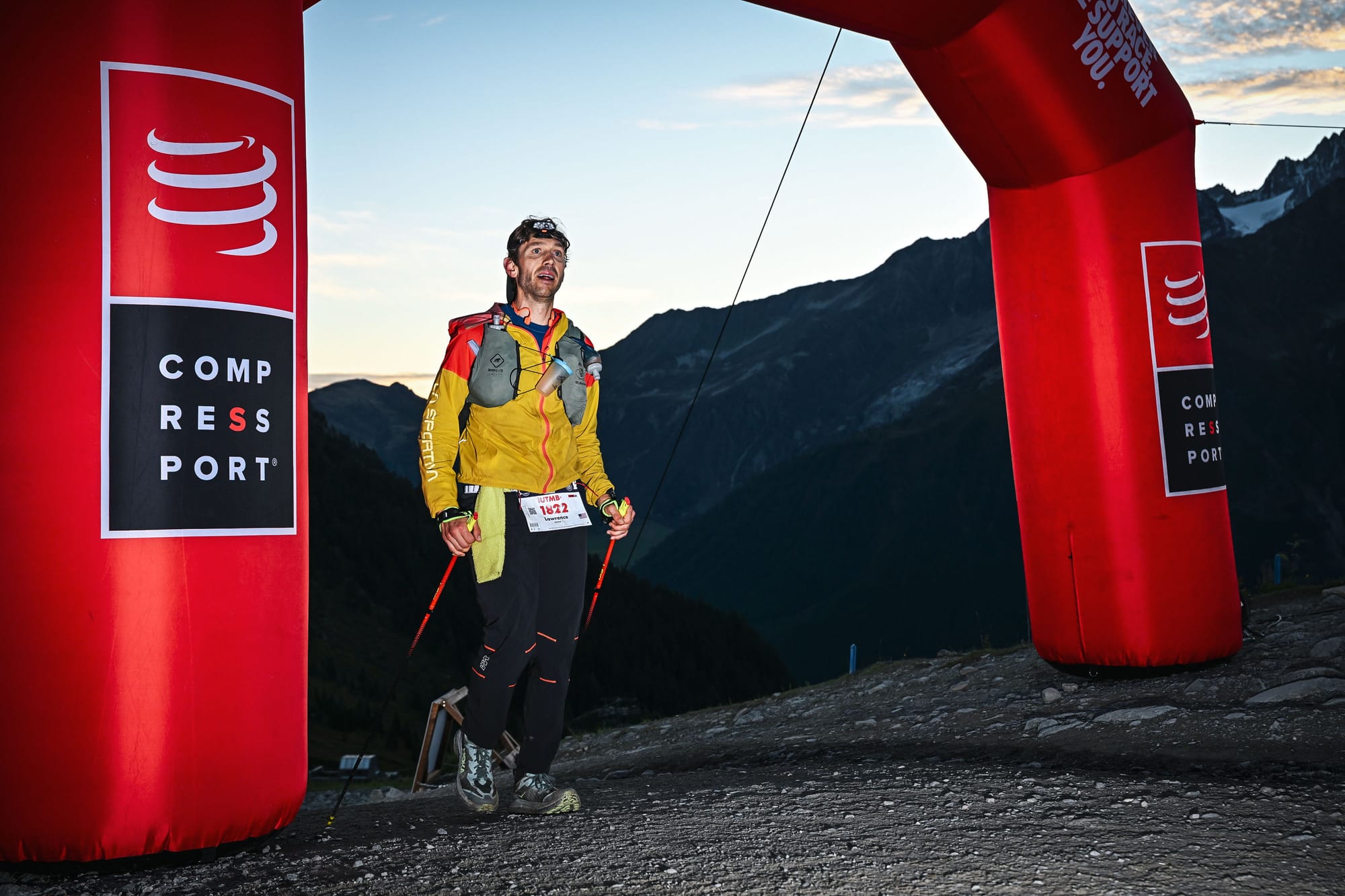
Vallorcine → the nap I didn’t want to take
By Vallorcine I’d been awake close to 48 hours. Tight chest, deep cough, a little frayed. I gambled on a 10-minute warm-up nap in the medical tent and slept ~45 minutes. It’s the decision that bothers me most—and it worked. I left without more caffeine, felt new, and the worst of the constriction faded.
Vallorcine → La Flégère → Chamonix
With seven kilometers to go I set a small, silly goal: catch eleven. I caught twenty-two and ran the finish. Crossing the finish line with Paloma was very emotional.
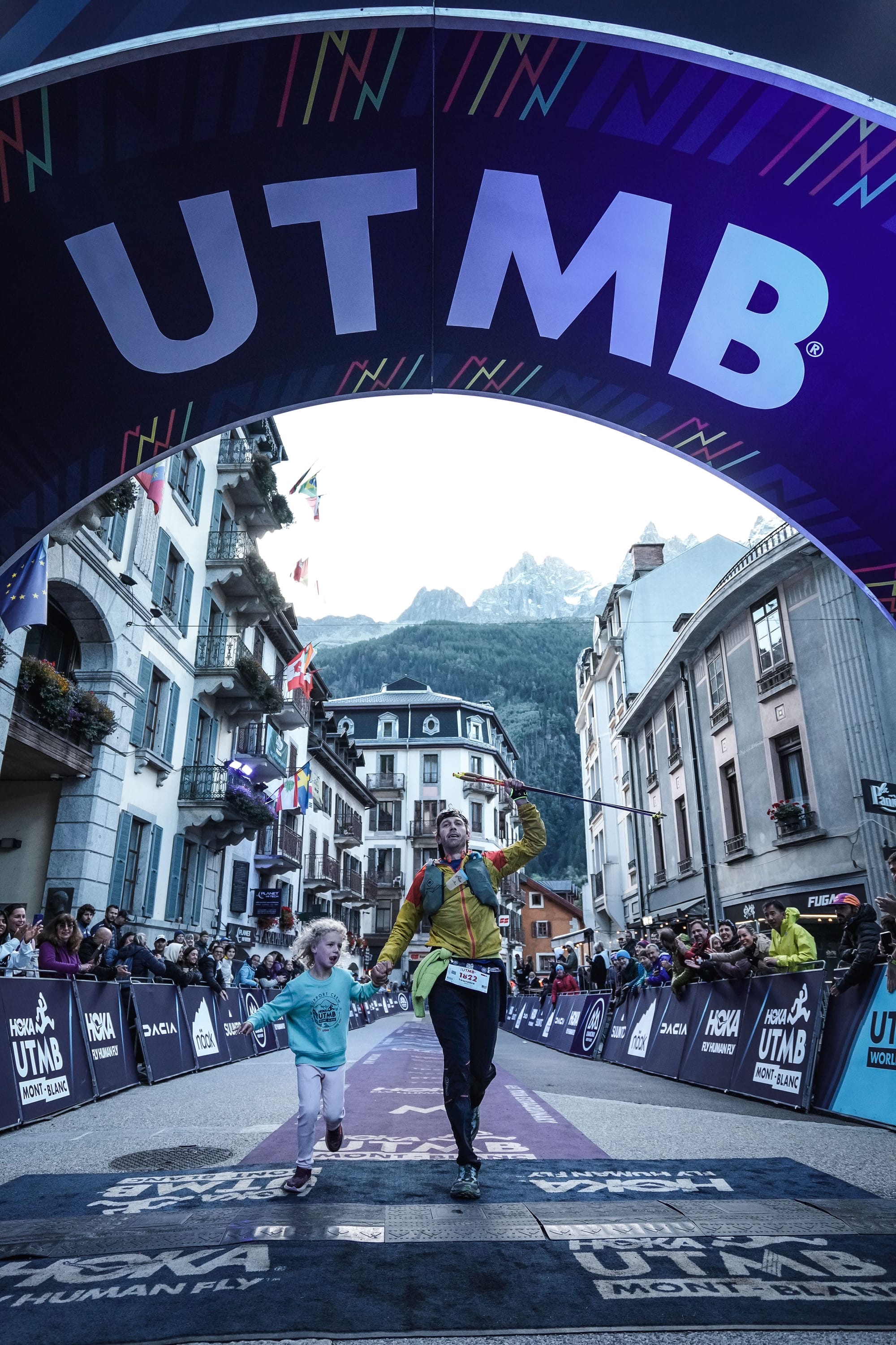
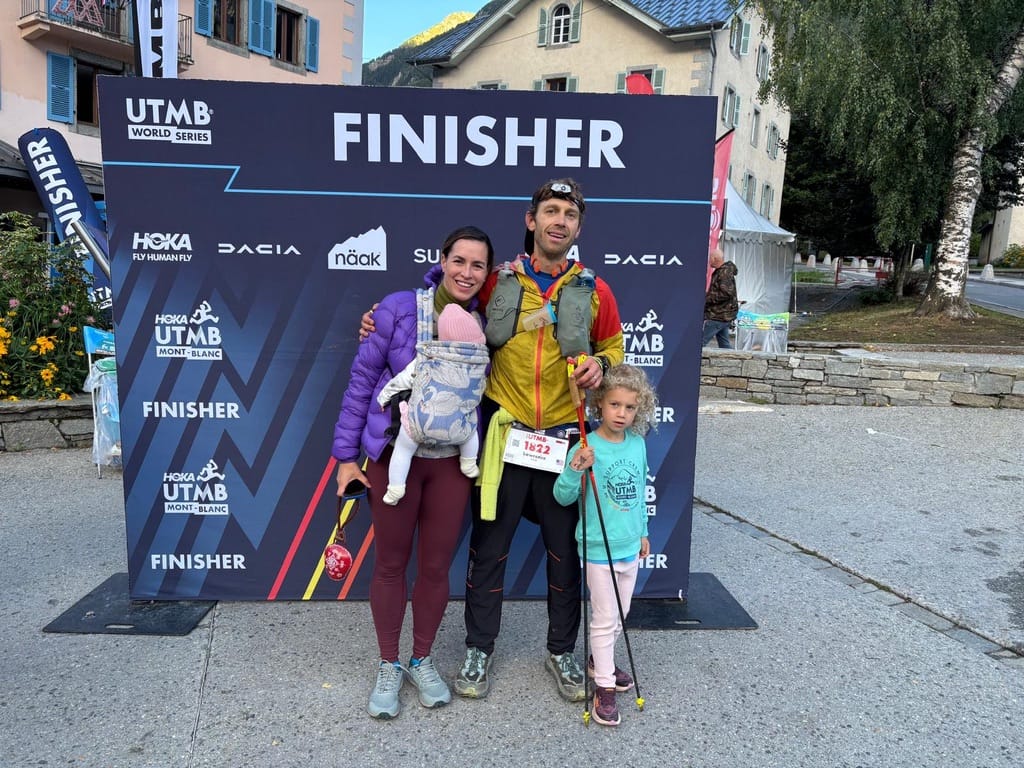
These are the frames I’ll remember. Paloma running across the finish line with me and the finisher shot (Lolo decided to stay in bed). They make every early alarm, every quiet mile, every decision to keep moving worth it.
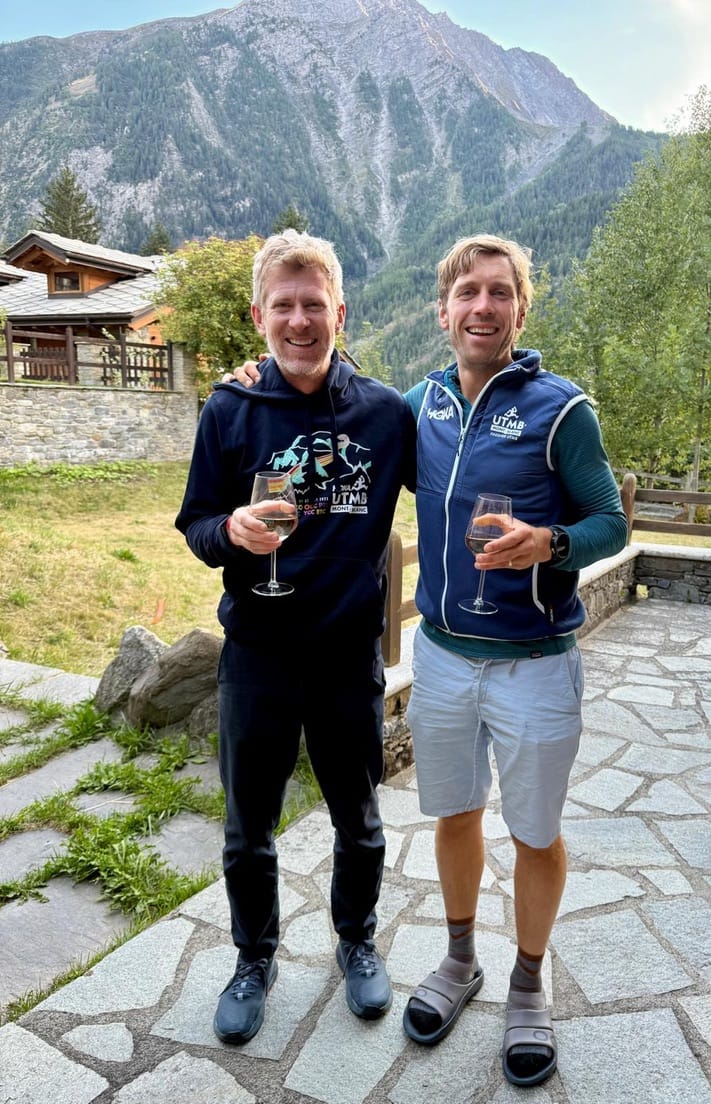
What Worked
Discipline: average HR about 122 bpm, no hero surges, on-time fueling every forty minutes. Risk management when it was slick early. Coke and broth as the reset when the lights dimmed. Crew saves: JJ in Courmayeur with pretzels and PB&Js (I ate them all by the end) and my dad with fresh poles after the snap (all organized by Marina).
What I’ll Change
A shell that goes over the pack so I can layer while moving. Gloves first while hands are warm, beanie plus hood for the cols. Crest-minus-5 as a habit, not a note. A belt for extra flasks; stop hauling water I won’t drink. Sodium where I can’t ignore it. Arrive sixty minutes early to erase the ~1-hour start tax. A rescue inhaler and spacer in the vest. If possible, crew at key majors so specific and intentional food replaces cold, broken crackers.
Stats
- Official: 38:22 • 590 / 2,492 (top ~24%)
- Watch: 175.3 km • 10,316 m+ • Elapsed 38:21:51 • Avg pace 13:08/km
- Heart rate: Avg 122 bpm • Max 152 bpm
- Pre/Post Courmayeur HR: ~127 → ~118 bpm (Δ −9)
- Energy in: ~64–72 g carbs/h → ~9.8–11.0k kcal
- Estimated deficit: ~8,000 kcal (~200–250 kcal/h net)
- Start tax: ~1:00 (late pen + wet funnels)
Thanks
Marina, Paloma, Lolo, Viola, Larry, Emmie, JJ—for pretzels, PB&Js, fresh poles, and believing when the cave echoed. And of course Jason for convincing me that ultra-running is cool. Had he not dragged me to the finish of the Adamello 100 2024, I wouldn't have had the chance to run UTMB.
Why (again), and what’s next
I came to UTMB to learn how deep my well is. In Courtney’s language I wanted to see how large I could make the pain cave, to chisel more room into it. We didn’t find the bottom this year; the airway set the ceiling first. That’s fine.
Now on to 2026 to see how deep the well goes and how large the pain cave can become.
Note to Future Me (UTMB 2026)
Stick to your plan. Be in the pen sixty minutes early. Layer before the crest. Gloves first. Shell over the pack. Eat every forty minutes. Use the inhaler if the wind bites. Then go find the bottom of the well.
